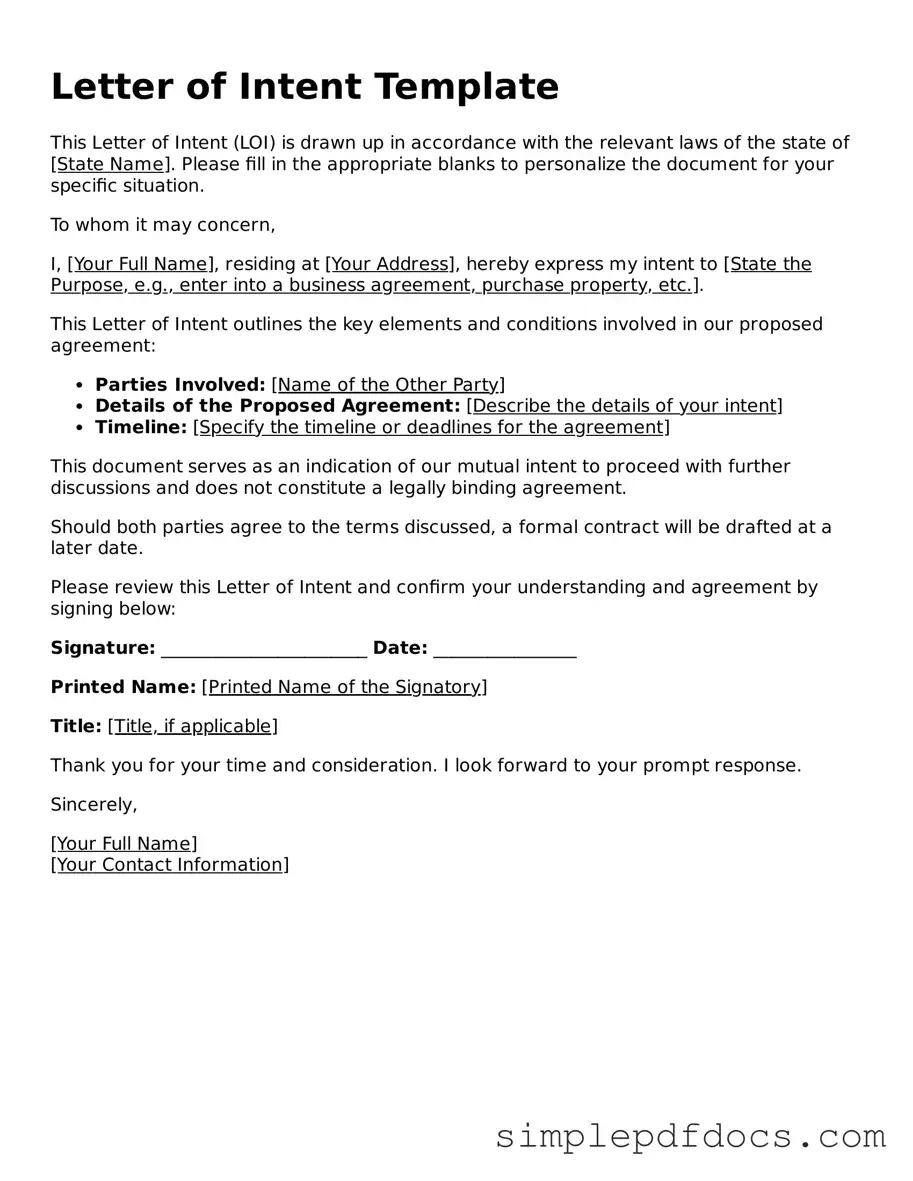Attorney-Approved Letter of Intent Form
A Letter of Intent is a document that outlines the preliminary understanding between two or more parties before a formal agreement is finalized. It serves as a roadmap for negotiations, clarifying intentions and expectations. While not legally binding, it plays a crucial role in establishing a mutual framework for future discussions.
Get Document Here
